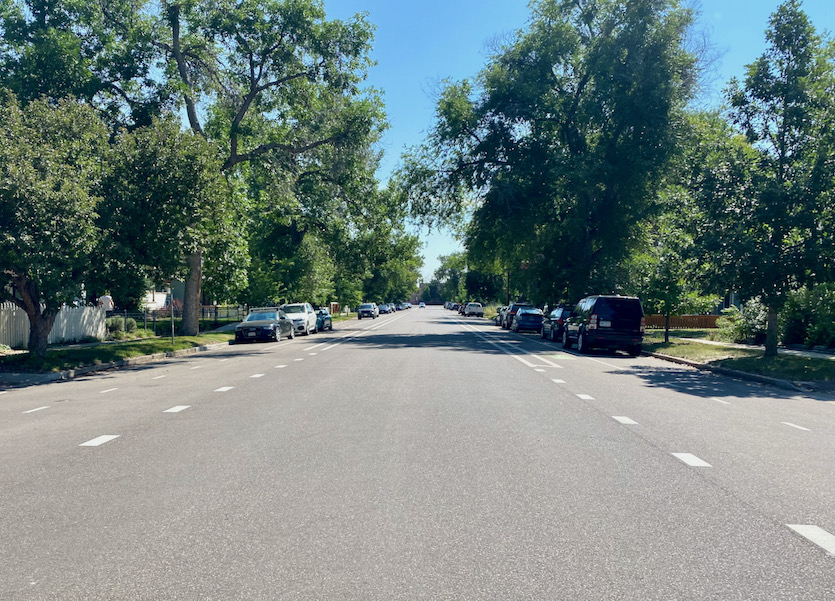Did you know that the Community Cycles Advocacy Committee provides input on City of Boulder transportation projects?

One project of interest is on Pine Street, between Folsom and 28th. As part of a resurfacing project, you may have noticed that the City has added a new buffered bike lane – or a bike lane with a buffer space between the bicycle lane and the drive lane – between Folsom and 28th streets. Along with the new bike lane, the speed limit on this stretch of Pine Street has been lowered from 30 mph to 25 mph.
Did you also notice that there is no center stripe? That is an experimental innovation where the City will evaluate vehicular speeds to see if people drive slower with no center line. CCAC membership Kurt had this to say about the Transportation Department at Tuesday’s City Council meeting:
“I just want to give a quick thank-you to the Transportation Department for the experimental project happening on Pine St between Folsom and 28th. As background, there’s some evidence that painted center lines on urban two-lane streets increase traffic speeds and therefore decrease safety. (This is very different from high-speed rural roads, where center lines clearly improve safety.) And it’s not at all clear center lines are necessary: after all, most of our residential streets don’t have center lines, and cars don’t run headlong into each other. As a result Community Cycles has asked the department to revisit its policies regarding center lines. In response they proposed an experiment: after repaving they left the center line off, are measuring speed, then will lay a removable center line and measure speed again, then decide on policy based on the results.
This is great. The department has designed a safe and useful experiment that will help further our street-safety goals locally, and even potentially contribute to national-level research on this subject, which hasn’t been sufficiently studied. I’m very hopeful that we can conduct additional well-designed experiments like this in the future.
We’ve answered a number of questions about this project in the community, so I wanted to make sure you were aware of the project and the innovation coming from Transportation.”
– Kurt N, Community Cycles Advocacy Committee

